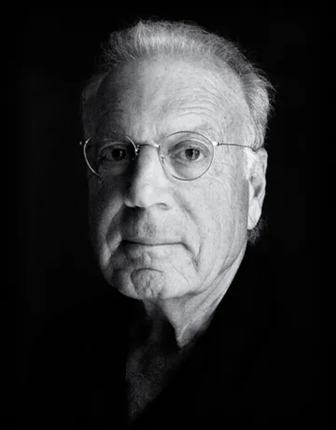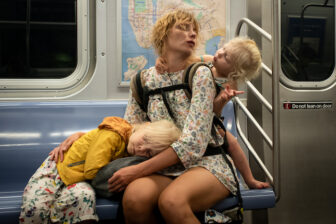Photographer captures subjects unaware
Are there rules for street photography? Should there be, or does the form demand a lack of same?
These questions arose while viewing the images of Paul Kessel, who came to the form later in life (at age 70) after deciding, on the spur of the moment, to take a class at the International Center for Photography in New York City.
That was 10 years ago. He continued taking classes, forging a career and crafting his own rules, the most stringent being that he has zero interaction with his subjects.
“The first picture I took, outside, was of me,” Kessel has said. “When I looked at it in the classroom, I saw the camera had seen things I didn’t see.”
An exhibit of Kessel’s photos, Streets, opens at Garage Gallery in Beacon on Second Saturday (May 13) with a reception from 4 to 7 p.m.
“Street photographers practice the art of being present but not engaged,” explains Scott Lerman, co-director of the Garage Gallery. “Like human tuning forks, they await the ‘decisive moment’ when everything in front of their lens comes together — when the formal, compositional elements are in perfect balance with the human, psychological content.”
The Current recently asked Kessel about his work.
What happens when someone sees you taking their photo and tries to engage?
I don’t expect to be invisible because typically I am 4 to 7 feet away. Most often, people are unsure if I took their photo. Often, I am not noticed at all since most people are in their own bubble. If I am noticed, I move on. I am almost never questioned afterward.

Do you have a quest when you set out, or is it happenstance?
I do have a quest: to get just one well-composed, interesting photo that has good light, and where the context is nearly as relevant as the subject matter. I am more interested in how the photograph looks than I am in the people. I strive to have layers that will create a three-dimensional look. The quest is rarely achieved but it is fun going after it.
You once said of your work: “I never call it art. I call it sport.” Do you still feel that way?
I do think of street photography as a sport — at least how I practice it.

What is the story behind the photo with the dog [above]?
I prefer not to provide backstories because that would take the viewer out of the equation. I want the viewer to linger and do the work of making up his or her own story. However, since you asked: It was at the annual San Gennaro Feast in Little Italy, New York City. I was struck by the man carrying a very large dog as he roamed around. I quickly took his photo with the hope that the context of the event would be included in a decently composed way. I then followed him around and made about five more shots. I ended up using the first spontaneous shot. I was engaged because the dog was not the carrying-around type. Additionally, adding the element of an animal in the photo makes it more interesting. If one looks closely, it can be seen that the dog was in recovery from a medical procedure.
How much of your work is about yourself and how much about the outside world?
Every picture is partially about myself because it reveals what interests me.
Garage Gallery is located on North Elm Street in Beacon, a half block north of Main. Streets continues through May 28 from 1 to 5 p.m. on Saturdays and Sundays, or weekdays by appointment. See garagegallery.com.

